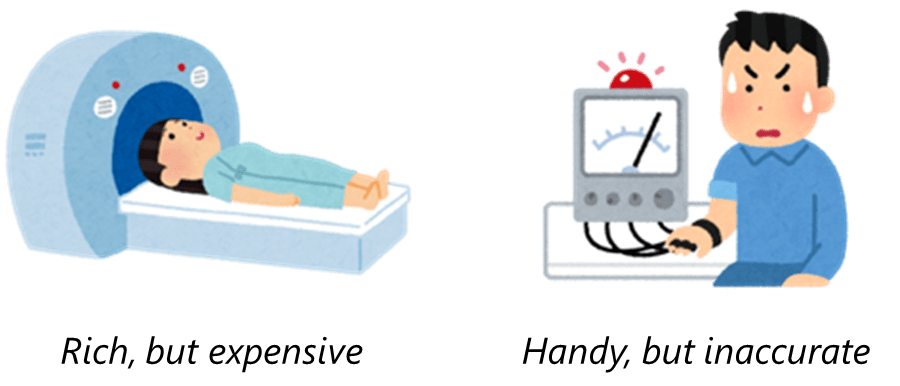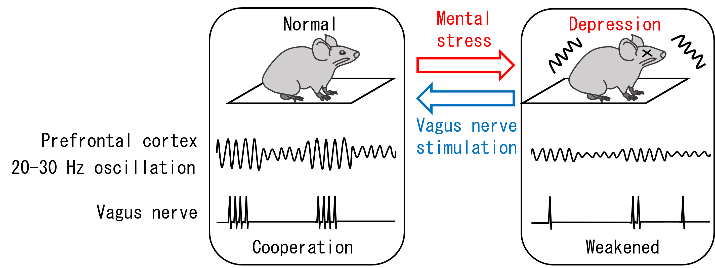Progress Report
Development of “Jizai Hon-yaku-ki (At-will Translator)” connecting various minds based on brain and body functions[1] Interpreting mental states through brain and autonomic nerves
Progress until FY2024
1. Outline of the project
In our R&D Item 1, we develop technologies to interpret our mental states through brain and autonomic nervous activities. That will broaden our ways of non-verbal communication.
The primary task of our R&D Item 1 is to instantiate sensing technologies worthy of use in everyday communication. For instance, fMRI offers rich information yet is costly and time-consuming; polygraphs are handy yet are far from precise in decoding one’s mental state. Interpretation of one’s mental state through electroencephalography (EEG) has yet to be established.

Here, our R&D Item 1 aims to develop precise and multi-dimensional mind sensing based on brain and autonomic nervous activities combined with behavioral data. Our goal is to offer a reliable mind-interpretation method suitable for everyday use.
2. Outcome so far
- Successfully reading monkeys' pleasant and unpleasant emotions from brain activity of deep and surface areas
- Accurately identifying aversive state in mice by analyzing neural signals using a Transformer model
- Discovered novel EEG characteristics associated with autism tendencies

Image provided by Ken-Ichiro Tsutsui (Tohoku U)
Outcome 1: We established a method for simultaneously recording brain activity from deep and surface areas in monkeys. Utilizing this approach, we are identifying the brain regions where mental states manifest in activity and advancing the establishment of basic principles for reading mental states from brain activity.
Outcome 2: We used various analytical methods to determine the state of aversive visceral pain from neural signals recorded from multiple brain regions of mice. As a result, we found that a Transformer model could read the mouse's aversive state with higher accuracy than conventional methods.

Image provided by Takuya Sasaki (Tohoku U)
Outcome 3: We discovered novel frequency characteristics of fluctuations in EEG synchrony networks, derived from the analysis of EEG data obtained from humans during rest, which serve as new indicators related to autism tendencies.

Image provided by Keiichi Kitajo (NIPS)
So far, we are conducting researches to unravel the relationship between neuronal activities and one’s mental state by combining animal and human experiments.
3. Future plans
Based on these animal/human researches, our R&D Item 1 will further develop sensing technologies to interpret human mental states reliably. We also plan to combine these findings with our R&D Item 2 (exosomes) to offer a multi-dimensional interpretation of one’s mental state.
(Tohoku U: K.I. Tsutsui, T. Sasaki & NIPS: K. Kitajo)